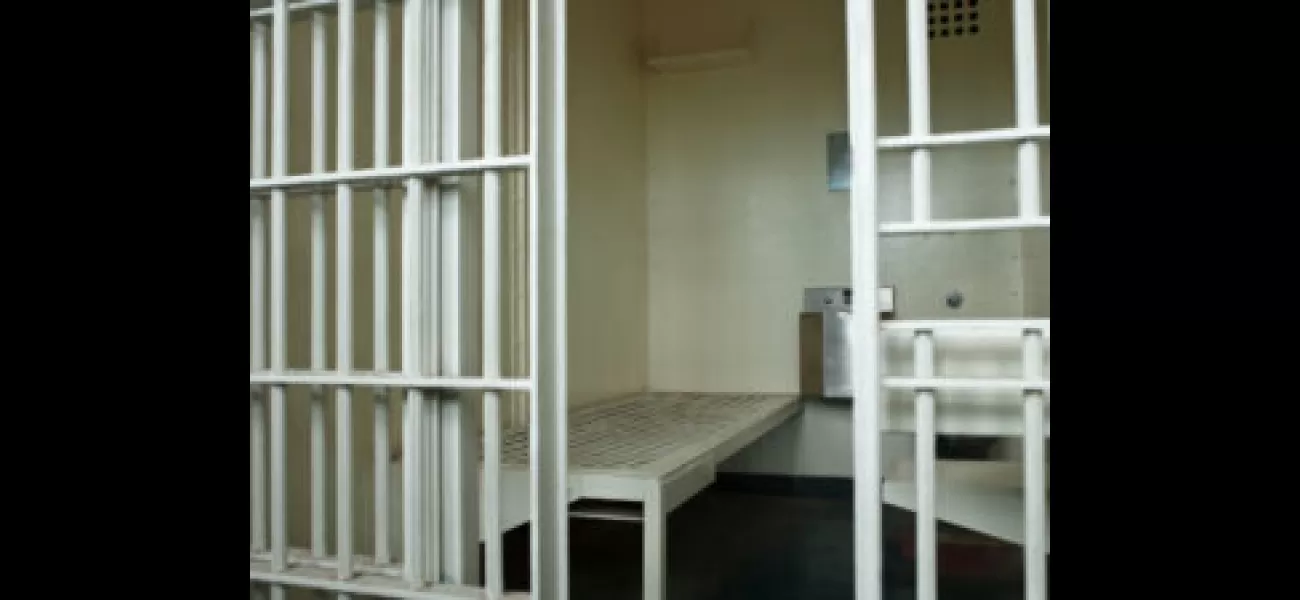Black prison population is decreasing significantly, according to recent trends.
Black prison population has seen a significant decrease, according to new report.
November 4th 2023.

A new report has revealed that over the past two decades, reforms of the past have reduced some of the burdens of this nation’s criminal legal system and its racial disparities. The total prison population has declined by 25%, with the Black prison population seeing the most significant decline of 39% since 2002.
This reduction in the prison population has had a positive impact on the lifetime likelihood of imprisonment for Black men. Those born in 1981 had a 1 in 3 chance of being imprisoned, whereas those born in 2001 had a 1 in 5 chance, although the number remains four times that of their white counterparts. Similarly, Black women’s rate of imprisonment has also been on a decline, though it is 1.6 times the rate of white women in 2021.
However, prison population levels have not yet returned to the levels of the late ’80s and early ’70s. The current pace of decarceration is averaging 2.3% annually since 2009, and would take 75 years to return to 1972’s prison population. This highlights the need to continue making progress to end mass incarceration in order to reduce racial disparities in the criminal legal system.
More trends have also emerged. For instance, Black women have experienced the most dramatic decline in imprisonment—70%—between 2000 and 2021. The imprisonment rate of Black men has also declined, falling by almost half. Additionally, when New York more than halved its prison population, the state’s violent crime rate fell by 38% while the U.S. violent crime rate fell by 24%.
Furthermore, high jail populations are still prevalent for Black communities. New York City has dramatically reduced its jail incarceration rate but 27% of Black men and 16% of Latinx men, in contrast to only three percent of white men, had been in jail by age 38 in 2017.
The population serving probation and parole has reached 3.7 million in 2021, down from a peak of 5.1 million in 2007. These community supervision levels have declined for most racial and ethnic groups, although people of color still represent 62% of the population serving a probation or parole sentence, although they comprised 41% of the U.S. population.
Finally, the number of youths held in juvenile justice facilities fell by 77%—from 109,000 in 2000 to 25,000 in 2020. Black youth were five times as likely as white youth to be incarcerated in 2015, however, this number has dropped to 4.4 times that of their white peers in 2019.
These trends demonstrate the progress being made to reduce racial disparity in the criminal legal system. However, there is still much work to be done, with national and local politics having resumed the politicization of crime and drug policies. Ultimately, it will take a long journey to end mass incarceration and ensure that progress is not reversed.
This reduction in the prison population has had a positive impact on the lifetime likelihood of imprisonment for Black men. Those born in 1981 had a 1 in 3 chance of being imprisoned, whereas those born in 2001 had a 1 in 5 chance, although the number remains four times that of their white counterparts. Similarly, Black women’s rate of imprisonment has also been on a decline, though it is 1.6 times the rate of white women in 2021.
However, prison population levels have not yet returned to the levels of the late ’80s and early ’70s. The current pace of decarceration is averaging 2.3% annually since 2009, and would take 75 years to return to 1972’s prison population. This highlights the need to continue making progress to end mass incarceration in order to reduce racial disparities in the criminal legal system.
More trends have also emerged. For instance, Black women have experienced the most dramatic decline in imprisonment—70%—between 2000 and 2021. The imprisonment rate of Black men has also declined, falling by almost half. Additionally, when New York more than halved its prison population, the state’s violent crime rate fell by 38% while the U.S. violent crime rate fell by 24%.
Furthermore, high jail populations are still prevalent for Black communities. New York City has dramatically reduced its jail incarceration rate but 27% of Black men and 16% of Latinx men, in contrast to only three percent of white men, had been in jail by age 38 in 2017.
The population serving probation and parole has reached 3.7 million in 2021, down from a peak of 5.1 million in 2007. These community supervision levels have declined for most racial and ethnic groups, although people of color still represent 62% of the population serving a probation or parole sentence, although they comprised 41% of the U.S. population.
Finally, the number of youths held in juvenile justice facilities fell by 77%—from 109,000 in 2000 to 25,000 in 2020. Black youth were five times as likely as white youth to be incarcerated in 2015, however, this number has dropped to 4.4 times that of their white peers in 2019.
These trends demonstrate the progress being made to reduce racial disparity in the criminal legal system. However, there is still much work to be done, with national and local politics having resumed the politicization of crime and drug policies. Ultimately, it will take a long journey to end mass incarceration and ensure that progress is not reversed.
[This article has been trending online recently and has been generated with AI. Your feed is customized.]
[Generative AI is experimental.]
0
0
Submit Comment





